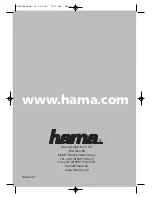
Basic Principles
BC7300
7
Basic Principles
Device Description of the BC7300
The BC7300 Bus Terminal Controller is a Bus Coupler with integrated PLC
functionality and a MODBUS slave interface.
The controller is programmed in IEC 1131-3. Up to 64 terminals belonging
to the Beckhoff Bus Terminal System can be connected to the BC7300.
These include analog signal types for current and voltage, as well as
PT100 and thermocouples, in addition to digital input and output terminals.
The Bus Terminal Controller's MODBUS interface allows a MODBUS
master to be connected.
The Beckhoff Bus Terminal System
Up to 64 Bus Terminals
Each having 2 I/O channels
for each signal form
De-centralised wiring of
each I/O level
IPC as controller
Bus Couplers for all usual
bus systems
Standard C - rail assembly
Modularity
The Bus Terminal system is the universal interface between a fieldbus
system and the sensor / actuator level. A unit consists of a Bus Coupler as
the head station, and up to 64 electronic series terminals, the last one
being an end terminal. For each technical signal form, terminals are
available each having two I/O channels, and these can be mixed in any
order. All the terminal types have the same mechanical construction, so
that difficulties of planning and design are minimised. The height and depth
match the dimensions of compact terminal boxes.
Fieldbus technology allows more compact forms of controller to be used.
The I/O level does not have to be brought to the controller. The sensors
and actuators can be wired de-centrally, using minimum cable lengths. You
can locate the controller installation anywhere within the plant. The use of
an Industrial PC as the controller means that the operating and observing
element can be implemented in the controller’s hardware. The controller
can therefore be located at an operating panel, in a control room, or at
some similar place. The Bus Terminals form the de-centralised input/output
level of the controller in the control cabinet and the subsidiary terminal
boxes. The power sector of the plant is also controlled over the bus system
in addition to the sensor/actuator level. The Bus Terminal replaces the
conventional series terminal as the wiring level in the control cabinet. The
control cabinet can have smaller dimensions.
The Beckhoff Bus Terminal system unites the advantages of a bus system
with the possibilities of the compact series terminal. Bus Terminals can be
driven within all the usual bus systems, thus reducing the controller parts
count. The Bus Terminals then behave like conventional connections for
that bus system. All the performance features of the particular bus system
are supported.
The easy, space-saving assembly on a standard C-rail, and the direct
wiring of actuators and sensors without cross-connections between the
terminals standardises the installation. The consistent labelling scheme
also contributes.
The small physical size and the great flexibility of the Bus Terminal system
allows it to be used wherever a series terminal is also used. Every type of
connection, such as analog, digital, serial or the direct connection of
sensors can be implemented.
The modular assembly of the terminal strip with Bus Terminals of various
functions limits the number of unused channels to a maximum of one per
function. The presence of two channels in one terminal is the optimum
compromise of unused channels and the cost of each channel. The
possibility of galvanic isolation through potential feed terminals also helps








































